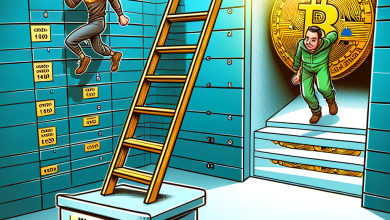Real estate: These rental apartments are in highest demand
Two rooms, 63 square meters and 592 euros including rent – these are the key data of the dream apartment that the majority of potential tenants are looking for on Immoscout 24. The real estate portal evaluated the top ten percent of the apartment advertisements with the most inquiries from interested parties for the month of April, depending on the region. The single apartment with two rooms and an average price per square meter of 9.39 euros is therefore most in demand throughout Germany.
But supply and demand differ: According to Immoscout, more rental apartments with three rooms and around 70 square meters of living space are on average being offered. The cold rent is an average of 741 euros per month – and thus exceeds the financial framework of many interested parties. “The existing supply often does not match the demand: too big, too expensive,” says Immoscout Managing Director Gesa Crockford. Those looking to rent would therefore expand their search radius and increasingly switch to the surrounding area. “Because there is less competitive pressure there and the rents are cheaper.”
The run for free living space is still unbroken, especially in the German metropolises. Four of the five cities with the highest number of competitors for the most wanted apartment are metropolitan areas, and fifth place is taken by a university town in the Black Forest, as the table shows.
It is most extreme in the capital. 41 percent of all rental apartment advertisements are one-room apartments. But the search ads dominate other parameters: the popularity ranking is led by two-room apartments with a basic rent of 554 euros.
Two-room apartments in Berlin: 636 applicants every day
On average, 636 people apply for such an apartment – per day. In the other large cities, the criteria for finding accommodation are similar. And here, too, the applicants are piling up. In Hamburg, 199 people responded to apartment advertisements with two rooms, 57 square meters and 563 euros cold rent. In Cologne, interested parties are even willing to pay 700 euros, but the competition is still fierce. And in Freiburg im Breisgau, too, the housing market seems to be just as tense as in the metropolises mentioned above: 164 people apply here for the most wanted apartment within a day.
Home inspection tips
Anyone viewing a property should definitely do so in broad daylight. Then not only defects can be detected better, but also the overall lighting conditions can be assessed. If you want to know whether traffic noise or trades in the vicinity are annoying, you should visit on weekdays - before or after lunchtime.
A thorough property inspection takes time – and sellers and prospective buyers should take that too. Let each room work its magic on you, pay attention to details such as radiators, windows, doors and fittings. Let us show you everything in peace and then take a second tour. Then you will surely have open questions and you will get a more lasting impression.
It is also advisable to take a companion with you on a first visit. The four-eyes-principle makes every viewing appointment twice as productive, because everyone pays attention to different things. The risk of overlooking something essential is significantly lower.
If there are two people viewing a property, one person should definitely take photos of all the rooms and the outside. They help to reflect on what you have seen later and to clarify any details.
Make sure that they check your ideas and wishes on the property. A list of the most important criteria that the house should meet and a list of the most important questions that need to be clarified with the seller will help. Such lists simplify the viewing appointment considerably.
After the visit, ask for a building plan or a floor plan drawing together with a calculation of the living space, or make a photocopy of it. A digital photo of it will also do if necessary. Then you can calmly consider whether the room layout meets your requirements and whether the desired furniture would also find its place.
In the case of used properties in particular, you should examine the walls, windows, doors, roof structure and basement as closely as possible. If rot or moisture has made its way somewhere, renovation work can quickly become expensive. Watch out for possible mold growth in room corners or behind furniture, also try out windows, shutters and doors. Also take a close look at the building services: How old is the boiler? What condition are the power and water lines in?
Anyone who sells a property must submit an energy performance certificate. A lot of real estate listings say it's a work in progress. However, buyers should not do without it voluntarily, but rather insist on it. Only then does he get a comparative value for the energy hunger of a property, especially as far as the costly heating requirements are concerned. But beware: There are two variants, the requirement and the consumption card. The latter only provides information on how much energy the previous residents used on average over three years - and that depends on their individual heating behavior. The requirement certificate is only based on the building fabric and average weather and is more objective.
If the property is seriously considered after the first inspection, it is worth arranging another appointment with a building surveyor. This surveyor should be able to identify significant defects that are difficult to detect for the layperson and to estimate the necessary rehabilitation or defect removal costs. You can find suitable architects or civil engineers at Dekra (dekra.de), the Association of Private Builders (vpb.de), or the Federal Association of Freelance Experts (bvfs.de).
A property viewing should always include a walk through the neighborhood. In this way, you will be able to see how good the infrastructure is in the immediate vicinity, whether there is a source of noise that is disturbing you, and estimate the distances to shops, schools, or bus and train stops. Last but not least, the atmosphere in a residential area also plays an important role.
With increasing demand, prices climb to record highs for the low supply, as an analysis by Immoscout 24 from March shows. In Berlin, renters have to dig deep into their pockets. In the fourth quarter of 2022, a rent of EUR 11.45 per month was charged for existing buildings – the increase in five years is around a third. The rent for new buildings in the capital is now even 15.95 euros. An increase of almost fifty percent (48.2 percent). This is a very high average even compared to other popular cities such as Hamburg or Cologne. On average across Germany, tenants paid EUR 10.88 per square meter.
Also read: Real estate prices fall by up to ten percent: buyers are returning
Only in Munich was it significantly more expensive again in the fourth quarter of 2022: 21.37 euros cold rent for new buildings were asked. Applicants in the city therefore plan more money when searching. According to the Immoscout analysis, apartments with an average of two rooms and 54 square meters for 926 euros are the most frequently sought after.
Away from the big cities, the rental housing market is a lot more relaxed. Demand and asking rents are significantly lower. In Hoyerswerda, Saxony, the most sought-after apartment has two rooms, is 57 square meters and is being offered for 335 euros including rent. The competition is rather small. On average, only two prospective tenants apply for the advertisement within a week - the chance of an affordable apartment is therefore much greater.
Also read: Purchase prices and rents: This is how much living space costs in your district




